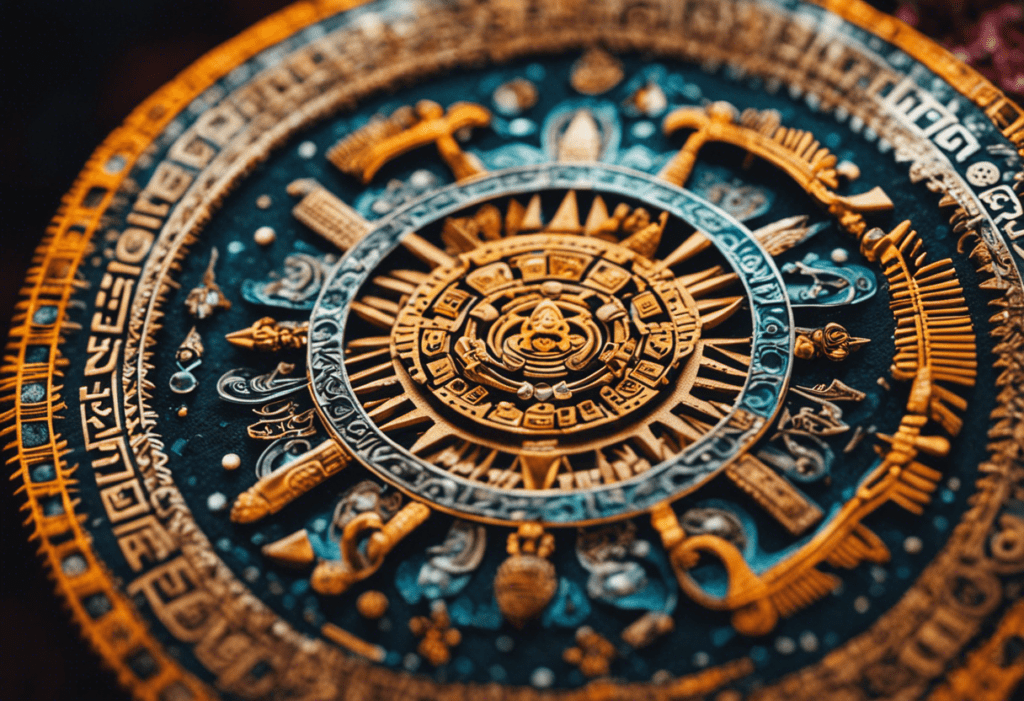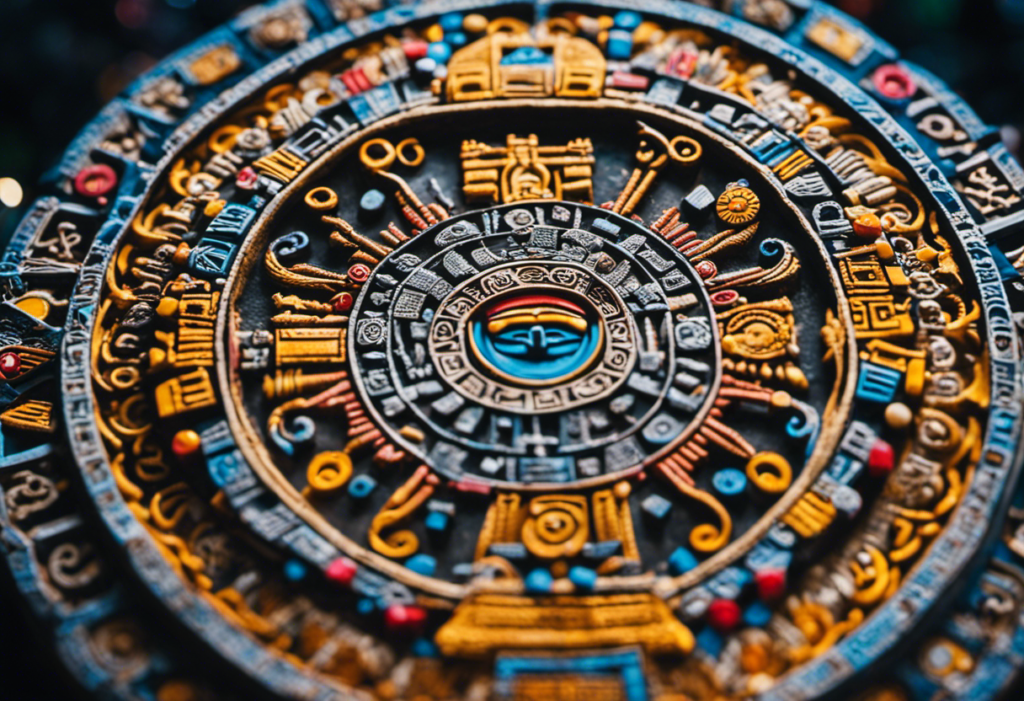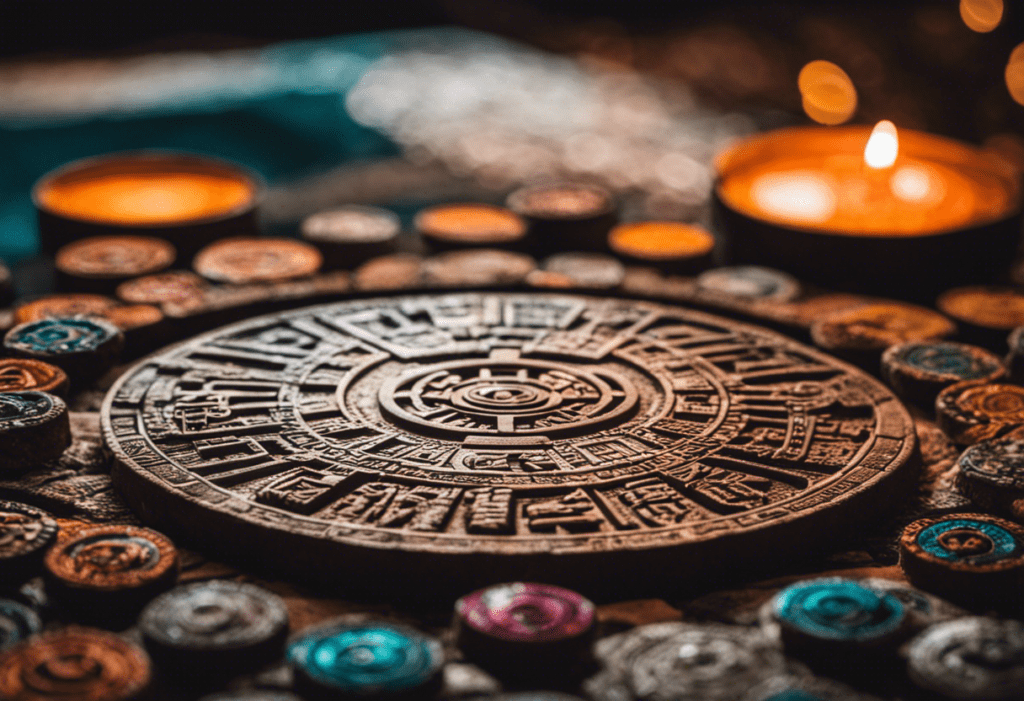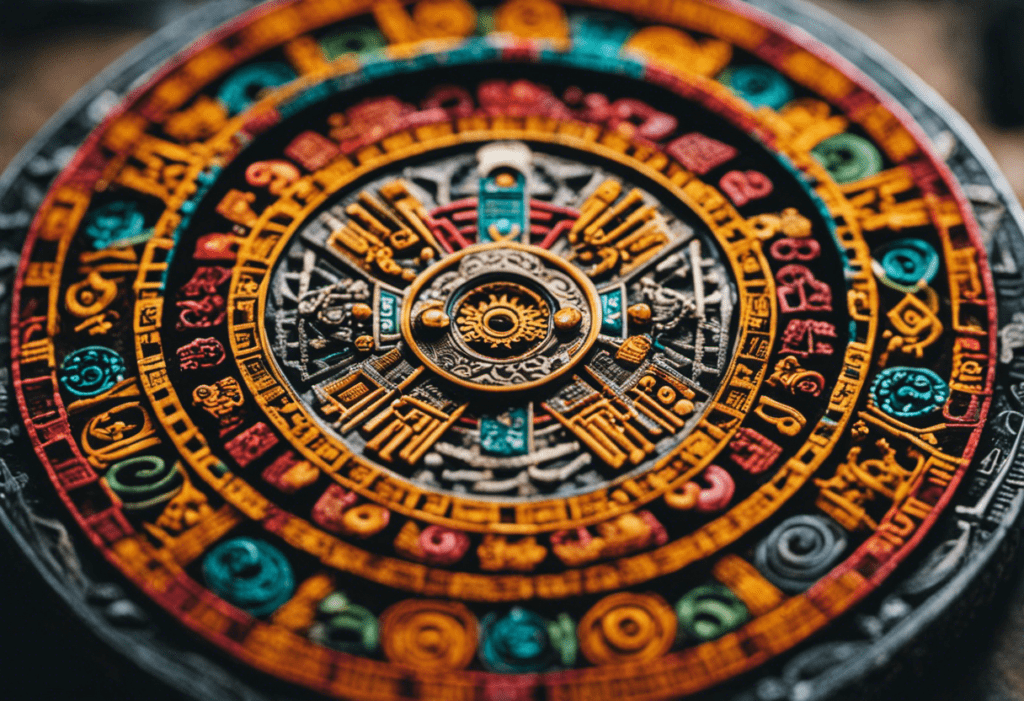In the realm of ancient civilizations, the Tonalpohualli stands as a captivating enigma. Like a labyrinth of symbols and numbers, this sacred Aztec calendar offers a gateway into the intricate tapestry of their religious beliefs and daily lives.
Through a lens of objectivity and analysis, this article delves into the origins, structure, and significance of the Tonalpohualli, shedding light on the rituals and ceremonies that shaped Aztec culture.
Prepare to embark on a detailed journey, where the legacy of this remarkable calendar unfolds before your eyes.
Key Takeaways
- The Tonalpohualli is a 260-day calendar that played a fundamental role in the religious and social practices of the Aztecs and other Mesoamerican civilizations.
- The calendar consists of a circular arrangement of 20 day signs and 13 numbers, reflecting the cyclical nature of time and the interconnectedness of the Aztec worldview.
- The Tonalpohualli is filled with intricate patterns and symbols that represent natural elements, gods, and celestial bodies, providing insights into Aztec beliefs and practices.
- The Tonalpohualli influenced various aspects of Aztec daily life, including determining auspicious dates for ceremonies and events, organizing agricultural rituals, and assigning social status based on birth dates. It continues to be studied and celebrated in modern times.
Origins of the Tonalpohualli
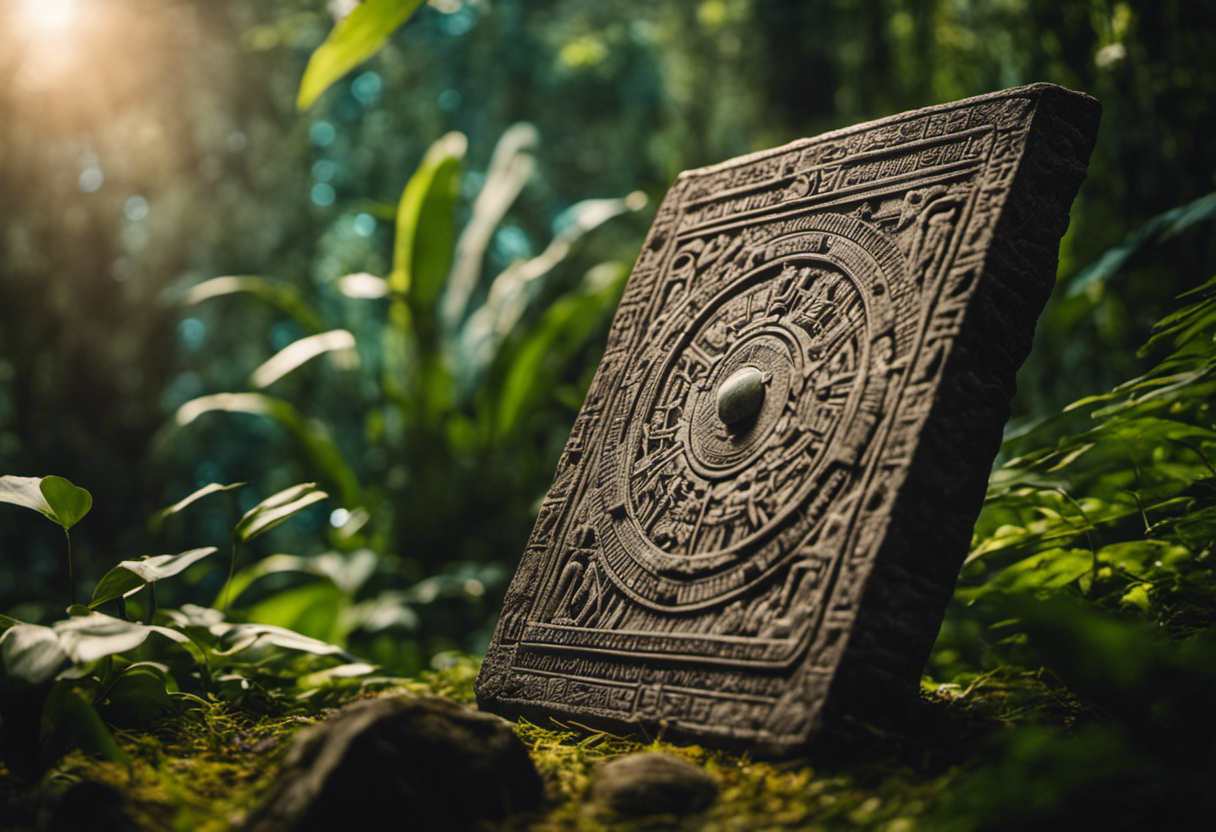

The origins of the Tonalpohualli can be traced back to the ancient Mesoamerican civilization of the Aztecs. This sacred calendar system held immense cultural significance for the Aztec people, as it was a fundamental aspect of their religious and social practices. The Tonalpohualli consisted of a 260-day cycle, which was made up of 20 day signs and 13 numbers. Each day sign had its own specific meaning and represented a particular deity or natural element.
Historians and anthropologists analyze the origins of the Tonalpohualli to understand its cultural significance within Aztec society. Through extensive research, they have uncovered evidence that suggests the calendar was not exclusive to the Aztecs, but was also used by other Mesoamerican civilizations such as the Maya and the Zapotecs. This indicates that the Tonalpohualli had a wider regional influence and played a significant role in the religious and social practices of these different cultures.
The Tonalpohualli served as a guide for various aspects of Aztec life, including agricultural activities, religious ceremonies, and the naming of individuals. It was believed that each day sign had its own unique energy and characteristics, which influenced the events and experiences that occurred on that particular day. The Tonalpohualli was therefore consulted by the Aztecs to determine auspicious days for important activities, such as marriages, births, and the initiation of new ventures.
Structure and Components of the Tonalpohualli
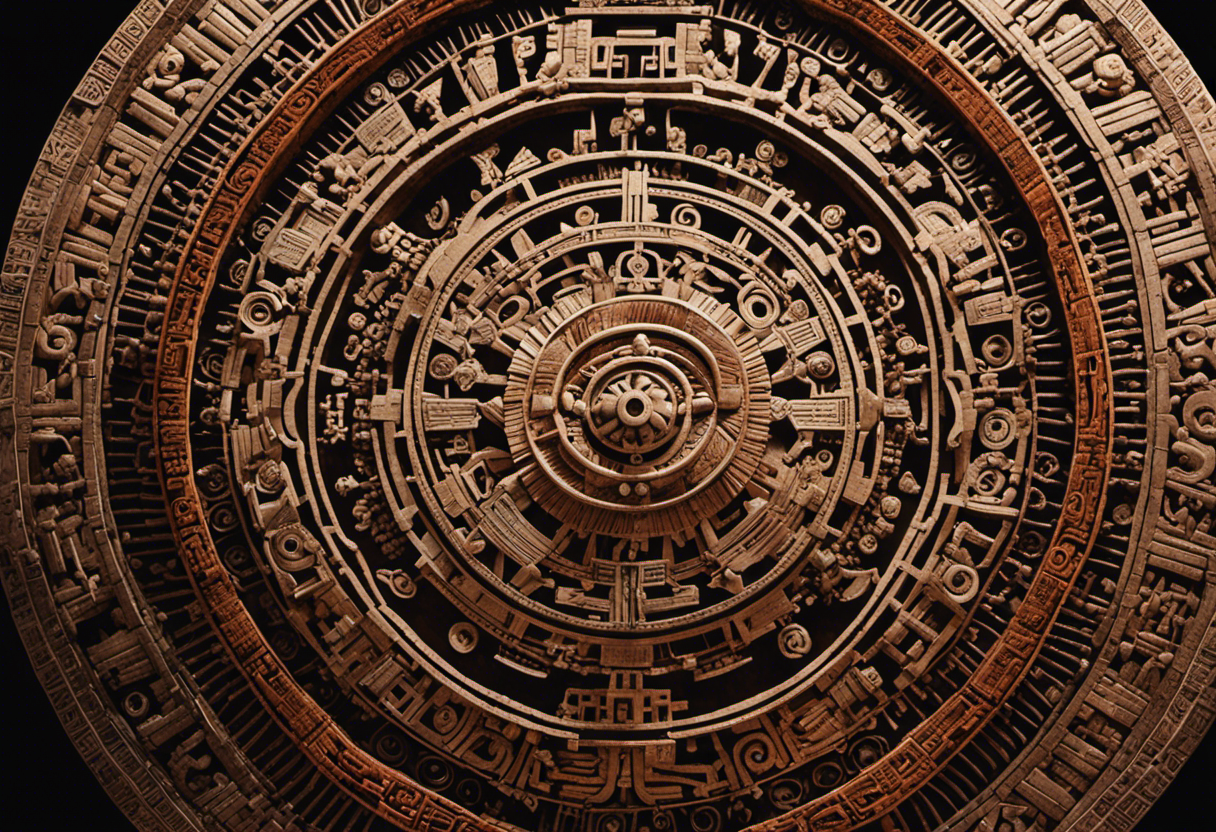

The structure and components of the Tonalpohualli, the sacred Aztec calendar, revolve around three key points.
Firstly, it is a symbolic representation of time, with each day having its own unique combination of a number and a day sign.
Secondly, the calendar holds great ritual significance in Aztec culture, as it was used to determine auspicious dates for various ceremonies and events.
Lastly, the Tonalpohualli follows a 260-day cycle, which was believed to have a profound impact on the lives of individuals and the destiny of the community as a whole.
Symbolic Representations of Time
Symbolic representations of time in the Tonalpohualli calendar are characterized by intricate patterns and interwoven symbols. These symbols hold significant cultural significance for the Aztec civilization. Historians and anthropologists analyze these representations to understand the deeper meanings and cultural context behind them.
The Tonalpohualli calendar consists of 260 days, each associated with a specific combination of 20 day signs and 13 numbers. These symbols represent various aspects of Aztec life, such as natural elements, gods, and celestial bodies. The combination of these symbols creates a complex system that reflects the cyclical nature of time and the interconnectedness of the Aztec worldview.
The intricate patterns and interwoven symbols in the Tonalpohualli calendar provide researchers with valuable insights into Aztec beliefs and practices, shedding light on their understanding of time and its significance in their society.
Ritual Significance of Calendar
One can gain a deeper understanding of the ritual significance of the Tonalpohualli calendar by examining its intricate structure and the components that make it up.
Historians and anthropologists strive to present objective and detailed accounts of historical or cultural events, artifacts, and practices, relying on evidence and facts rather than personal opinions or beliefs.
The Tonalpohualli calendar, with its symbolic interpretations and cultural significance, played a crucial role in Aztec society. It consisted of 260 days, divided into 20 periods of 13 days each. Each period had a specific name and associated deity, reflecting the Aztec worldview and belief system.
The Tonalpohualli served as a guide for religious ceremonies, agricultural activities, and social events, providing a framework for understanding and organizing time within the Aztec civilization. Its structure and components were deeply intertwined with the spiritual and cultural fabric of the society.
Role of 260-Day Cycle
An important aspect of the Tonalpohualli calendar is its 260-day cycle, which is composed of various structures and components. This cycle holds symbolic meaning and cultural significance for the Aztec civilization.
The 260-day cycle is formed by combining two smaller cycles: a 13-day cycle known as the trecena, and a 20-day cycle called the veintena. Each day in the Tonalpohualli is represented by a combination of a number from 1 to 13 and a name from a list of 20 day signs. This unique combination creates a distinct energy for each day, with its own significance and purpose.
The Tonalpohualli was used for divination, determining the best time for various activities, and understanding the cosmic forces at play in daily life. Its intricate structure and cultural importance showcase the depth of the Aztec civilization’s understanding of time and its connection to the divine.
Significance of the Tonalpohualli in Aztec Religion
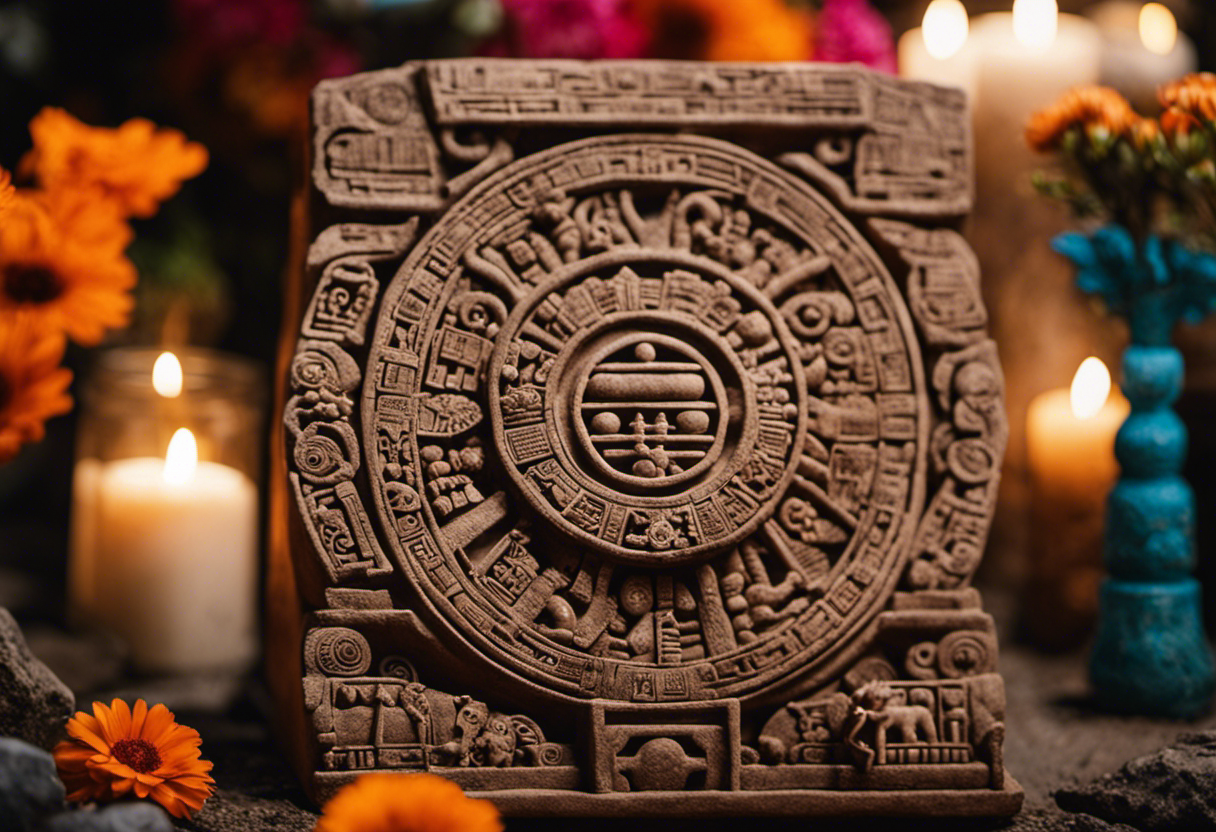

The Tonalpohualli held great spiritual significance in Aztec religion. It served as a guide for religious rituals and practices, playing a central role in determining the auspicious days for various ceremonies and events. This allowed the Aztec people to align their actions with the divine forces. The Tonalpohualli’s intricate structure and components were believed to have a direct influence on the spiritual well-being of individuals and the entire community.
Spiritual Role of Tonalpohualli
The Tonalpohualli plays a pivotal role in shaping the spiritual beliefs and practices of the Aztec religion. Historians and anthropologists have extensively studied the spiritual significance and cultural practices associated with the Tonalpohualli to gain a deeper understanding of its impact on Aztec society.
The Tonalpohualli is a sacred calendar that consists of 260 days, each day being associated with a specific combination of a number and a day sign. This calendar was believed to be divinely ordained and was used to determine auspicious times for religious ceremonies, agricultural activities, and personal endeavors.
The Aztecs believed that these combinations of numbers and day signs had cosmic and spiritual implications, influencing the fate and destiny of individuals. The Tonalpohualli was not only a practical tool for organizing time but also a sacred and mystical system that connected individuals to the divine forces of the universe.
Ritual Practices Involving Tonalpohualli
Numerous ritual practices were conducted by the Aztecs that involved the Tonalpohualli, highlighting its significant role in their religious ceremonies and spiritual beliefs.
The Tonalpohualli was not just a calendar, but a sacred tool that shaped the Aztec worldview and guided their actions.
Ritual practices associated with the Tonalpohualli played a crucial role in connecting the Aztecs with their deities and maintaining harmony in their society.
These rituals included offerings, sacrifices, and ceremonies that were performed on specific days determined by the Tonalpohualli.
The Aztecs believed that by aligning their actions with the calendar, they could appease the gods and ensure fertility, protection, and prosperity for their community.
These ceremonial traditions were intricate and complex, involving priests, dancers, musicians, and other participants.
The detailed accounts of these practices provided by historians and anthropologists shed light on the profound significance of the Tonalpohualli in Aztec religion and its role in shaping their religious and social lives.
Rituals and Ceremonies Associated With the Tonalpohualli


Several significant rituals and ceremonies are closely intertwined with the Tonalpohualli, the sacred Aztec calendar. These rituals and ceremonies played a crucial role in Aztec religious practices and were conducted to honor the gods, seek their blessings, and ensure the well-being of the community.
One of the most important rituals associated with the Tonalpohualli was the New Fire Ceremony, known as Xiuhmolpilli. This ceremony was performed every 52 years to mark the completion of a full cycle of the calendar. It involved extinguishing all fires in the Aztec empire and then creating a new fire using friction. This fire was considered sacred and was used to light the hearths of every household, symbolizing the renewal of life and the beginning of a new era.
Another significant ceremony was the Binding of the Years, known as Fasting of the Tonalpohualli. This ceremony took place at the end of each 260-day cycle and was performed by fasting for several days. It was believed to purify the body and soul and ensure the continuity of time and the cosmic order.
Additionally, the Tonalpohualli played a crucial role in the organization of other ceremonies and rituals throughout the year. These included agricultural rituals, fertility rites, and ceremonies dedicated to specific gods and deities.
The Tonalpohualli and Aztec Daily Life


In addition to its religious significance, the Tonalpohualli also had a profound impact on the daily lives of the Aztec people. This sacred calendar not only dictated their rituals and ceremonies but also influenced their daily activities and cultural practices.
Historians and anthropologists have conducted extensive research to understand the detailed implications of the Tonalpohualli in Aztec daily life. Here are three ways in which the Tonalpohualli influenced their daily activities and cultural influence:
- Agricultural practices: The Aztecs were highly dependent on agriculture, and the Tonalpohualli played a crucial role in determining the most auspicious times for planting, harvesting, and other agricultural activities. This ensured a successful harvest and the well-being of the community.
- Social organization: The Tonalpohualli was used to assign names to individuals based on their birth date. These names were significant in determining one’s social status, role within the community, and even their destiny. The calendar helped establish hierarchies and maintain social order.
- Festivals and celebrations: The Tonalpohualli marked important dates for festivals and celebrations. These events were an integral part of Aztec culture and were often accompanied by religious ceremonies, music, dance, and offerings to the gods. The calendar provided a framework for organizing and planning these festivities, which brought the community together and reinforced their cultural identity.
The Tonalpohualli’s influence extended beyond religious rituals and ceremonies, shaping the daily lives and cultural practices of the Aztec people. Through its impact on agriculture, social organization, and festivals, it played a significant role in maintaining the harmony and cohesion of their society.
Legacy and Modern-day Understanding of the Tonalpohualli


Despite its ancient origins, the Tonalpohualli continues to be studied and revered in modern times due to its profound cultural and historical significance. Historians and anthropologists strive to present information about the Tonalpohualli in an objective, analytical, and detailed manner. They analyze its historical and cultural context to understand its significance and potential impact on Aztec society.
Modern interpretations of the Tonalpohualli have shed light on its role as a sacred calendar and its connection to Aztec cosmology. It is seen as a complex system that not only measured time but also played a vital role in religious ceremonies, agricultural practices, and social events. The Tonalpohualli provided a framework for understanding the cyclical nature of life, the interrelationship between humans and the natural world, and the importance of ritual and ceremony in maintaining harmony and balance.
The cultural impact of the Tonalpohualli is evident in contemporary Aztec communities. Despite the arrival of Christianity and the Spanish colonization, the Tonalpohualli has survived as a symbol of Aztec identity and spirituality. It continues to be celebrated in modern-day rituals, art, and festivals, serving as a connection to the rich cultural heritage of the Aztec civilization.
Conclusion
In conclusion, the Tonalpohualli, the sacred Aztec calendar, holds great significance in Aztec religion and daily life. Its origins can be traced back to ancient Mesoamerican civilizations, and its structure and components provide a unique system for tracking time and predicting future events.
Rituals and ceremonies associated with the Tonalpohualli played a crucial role in Aztec religious practices.
Today, historians and anthropologists continue to study and analyze the Tonalpohualli to gain a deeper understanding of Aztec culture and its impact on society.

